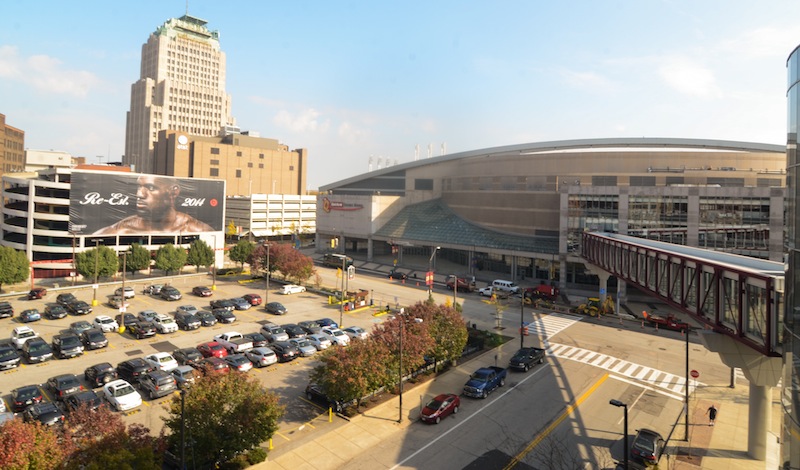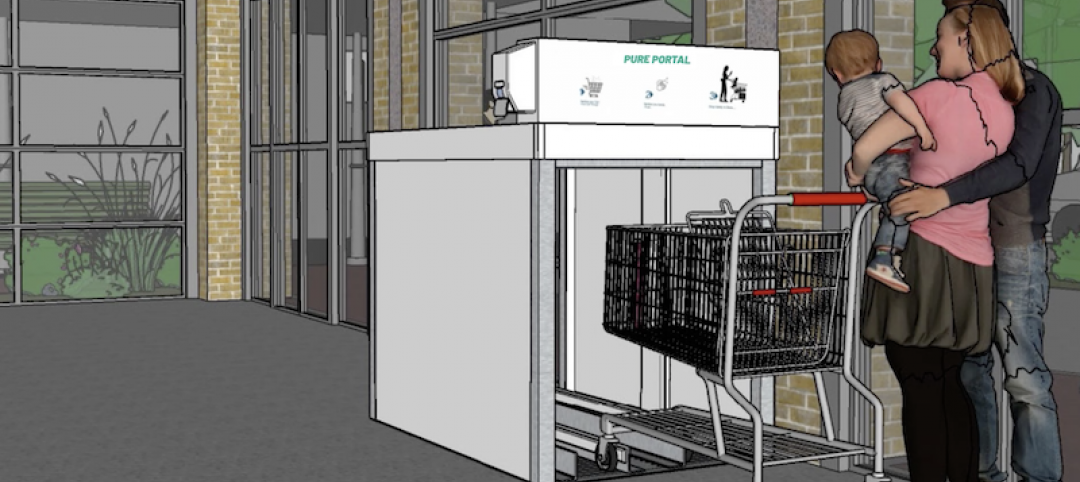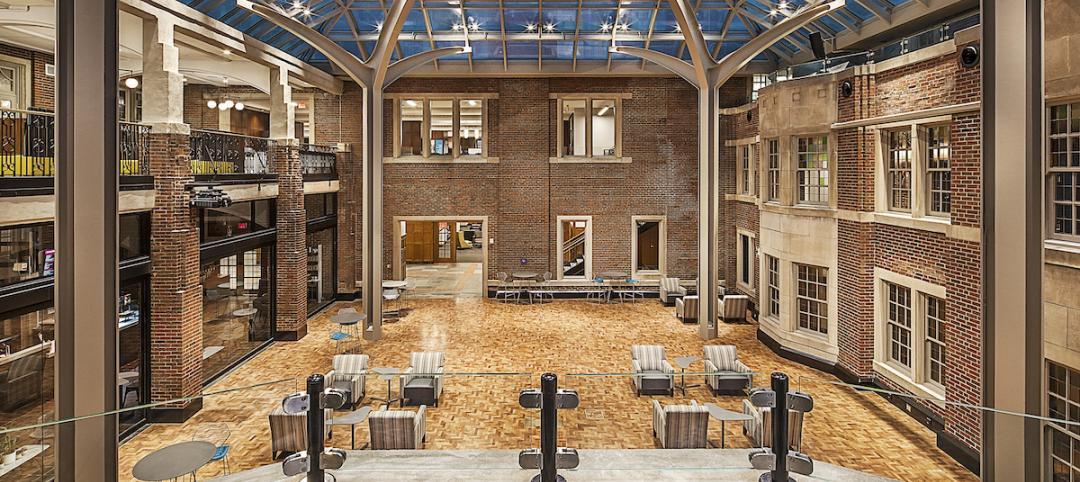Many of us have been frustrated at trade shows or sporting events where your cellphone can’t get reception because too many other people there were trying to use theirs at the same time?
Now consider the Republican and Democratic National Conventions, to be held over the next few weeks in Cleveland and Philadelphia. Each event is expected to attract something like 20,000 delegates, guests, and media, virtually all of whom will be using their cellphones to make calls, send texts and tweets, up- and download videos and images, and check social media sites, often minute-by-minute or even second-by-second.
The wireless networks at Quicken Loans Arena in Cleveland and the Pennsylvania Convention Center (which will continue to be open to the public during the Democratic event) expect to be able to handle this traffic thanks to distributed antenna systems (DAS) supplied by SOLiD, whose ALLIANCE product can support multiple carriers and public safety bands to ensure reliable connectivity in the buildings and surrounding venues and transportation centers.
DAS technology extends a building’s existing’s wireless coverage where it’s needed, so people can stay connected everywhere. SOLiD’s ALLIANCE product line provides robust edge densification to the carrier networks, “and gives them enough power to reach the handset and handle more traffic,” says Ken Sandfeld, president of SOLiD’s Americas division, based in Sunnyvale, Calif. “This year’s political conventions are the most connected and reliable in history.”
SOLiD has been installed in Quicken Loans’ arena for three years, and in 2015 underwent a major upgrade to 5-watt remotes, from 1-watt units, in order to accommodate extra carriers. (It’s not uncommon for mobile carriers to join a DAS at a large venue in anticipation of a big event where they expect a lot of their subscribers will attend.)
There are now 76 SOLiD ALLIANCE DAS units installed at Quicken Loans Arena, where the Republicans’ shindig kicks off on July 18. Verizon operates the network (built by Henkel), and is one of four carriers, along with Sprint, AT&T, and T-Mobile. Additional zones have been added to the DAS to address foot traffic on the floor of the arena during the convention. (AT&T has also been working on improving its bandwidth and reception inside the arena.)

Fifty-eight 20-watt DAS units, supplied by SOLiD, have been installed throughout the 2.2-million-sf Pennsylvania Convention Center in Philadelphia, where the Democrats will hold their presidential convention. Image: Wikimedia Commons
SOLiD is new to the massive Pennsylvania Convention Center, where the Democratic convention starts on July 25. The DAS network there covers 2.2 million sf, and includes 58 SOLiD ALLIANCE 20-watt DAS units installed for radio-frequency coverage. InSite Wireless built and owns the network. T-Mobile will cover the full facility, while AT&T will cover the lower levels of the convention center and the lower level of the nearby Reading Terminal Market.
Sandfeld anticipates that, with the proliferation of wireless devices, DAS installations will become more common, and not just in large venues or stadiums. “In the last few years, high-definition streaming video alone has been driving massive amounts of capacity needs. The number of instances where carriers are connecting [to DAS systems] is growing. And the systems are getting cheaper. I can see a time when all buildings have a system.”
However, not every building is a candidate for DAS unless a carrier is in the picture. That’s why Sandfeld recommends that developers and property managers that are considering DAS find experienced partners “that know how to work with carriers.”
Related Stories
Healthcare Facilities | Dec 15, 2021
MEP design considerations for rural hospitals
Rural hospitals present unique opportunities and challenges for healthcare facility operators. Oftentimes, the infrastructure and building systems have not been updated for years and require significant improvements in order to meet today’s modern medical demands. Additionally, as these smaller, more remote hospitals are acquired by larger regional and national healthcare systems, the first step by new ownership is often to update and rehabilitate the building. But how can this be done thoughtfully, economically, and efficiently in ways that allow the engineering and facility staff to adapt to the changes? And how can the updates accurately reflect the specific needs of rural communities and the afflictions with which these areas most commonly face?
Sponsored | Glass and Glazing | Oct 1, 2021
Seizing the Daylight with BIPV Glass
Glass has always been an idea generator. Now, it’s also a clean energy generator.
Resiliency | Aug 19, 2021
White paper outlines cost-effective flood protection approaches for building owners
A new white paper from Walter P Moore offers an in-depth review of the flood protection process and proven approaches.
Architects | Aug 5, 2021
Lord Aeck Sargent's post-Katerra future, with LAS President Joe Greco
After three years under the ownership of Katerra, which closed its North American operations last May, the architecture firm Lord Aeck Sargent is re-establishing itself as an independent company, with an eye toward strengthening its eight practices and regional presence in the U.S.
Wood | Jun 10, 2021
Three AEC firms launch a mass timber product for quicker school construction
TimberQuest brand seeks to avoid overinvestment in production that has plagued other CLT providers.
Building Technology | Jun 1, 2021
Orro Announces Google Nest Integration for the Orro Switch
Orro, creators of the professional-grade top-of-the-line Orro Smart Living System, today announced the integration of Nest products to Orro. As a certified partner in Google’s Device Access program, this latest Orro integration allows homeowners to have seamless control and access to Nest thermostats and doorbells from any Orro Switch throughout the home – creating a single unified smart home system with advanced, intelligent ambient control.
Coronavirus | Mar 11, 2021
The Weekly show, March 11, 2021: 5 building products for COVID-related conditions, and AI for MEP design
This week on The Weekly show, BD+C editors speak with AEC industry leaders about building products and systems that support COVID-related conditions, and an AI tool that automates the design of MEP systems.
AEC Tech | Mar 4, 2021
The Weekly show, March 4, 2021: Bringing AI to the masses, and Central Station Memphis hotel
This week on The Weekly show, BD+C editors speak with AEC industry leaders about the award-winning Central Station Memphis hotel reconstruction project, and how Autodesk aims to bring generative design and AI tools to the AEC masses.
Building Tech | Feb 17, 2021
PCL Construction introduces The PURE Portal for quickly sanitizing surfaces
The solution uses FAR-UV light technology.
Contractors | Dec 4, 2020
‘Speed to market’ defines general contractor activities in 2020
Contractors are more receptive than ever to ways that help get projects done faster.

















